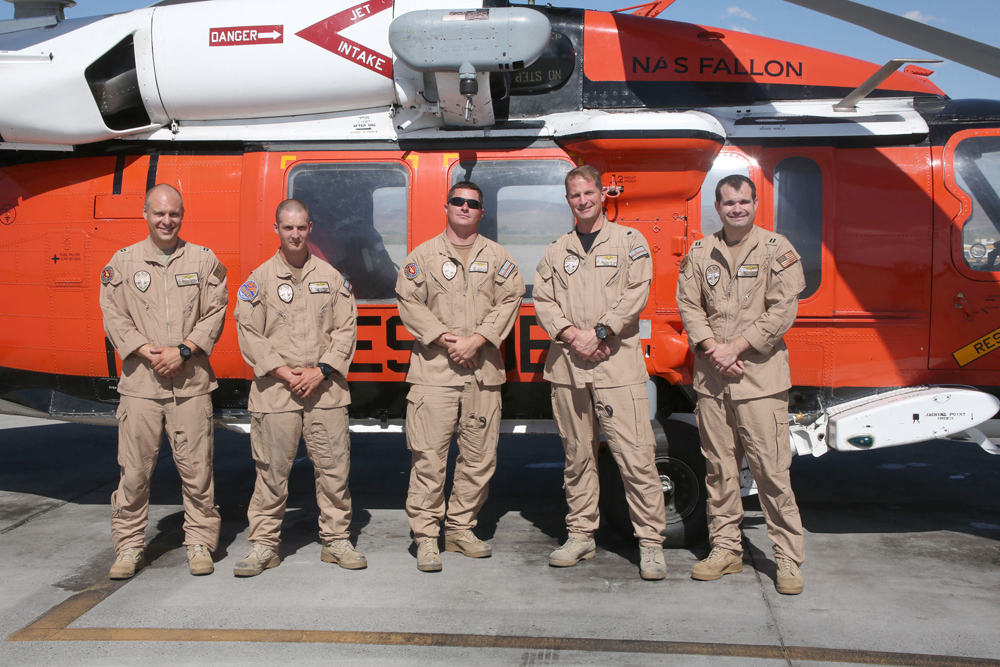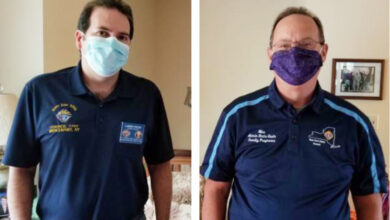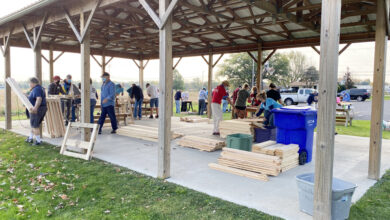Spencerport native aids in rescue of Donner Summit rock climber
The Longhorn Helicopter Search and Rescue (SAR) team from Naval Air Station (NAS) Fallon conducted a night rescue at Black Wall near Donner Summit in Nevada on Thursday, July 11 extracting and airlifting an injured rock climber.
“The survivor had been rock climbing on a very steep cliff face when he sustained his injuries,” said the crew chief, Petty Officer 2nd Class Jacob Glende, from Spencerport. “The terrain did not afford any opportunity to land, and we quickly understood why the ground rescue crew had called the Longhorns for this kind of mission.”
After local fire and rescue personnel arrived on scene to stabilize the climber, who had multiple facial and arm lacerations as well as injuries to his back, the ground rescue team determined the cliff was too steep to carry him safely down to the ambulance in a rescue litter. At 11 p.m., the ground team requested helicopter extraction of the patient, and the Longhorn SAR duty crew was recalled to launch for the life-saving mission.
“The Longhorn SAR team consistently trains to accomplish these exact kinds of rescues,” said Lt. Cary Lawson, the SAR mission commander and Loma Linda, California, native. “Our crew was conducting training for situations just like this on the very night we got the call. Our main concern was to arrive on scene as quickly as we could and get the survivor to much-needed medical attention without delay.”
A crew of five departed Fallon at 11:45 p.m. Wednesday, July 10, for the 97-mile transit to the victim’s location. After arriving on scene, the crew quickly spotted the climber’s location due to flashing lights and radio communication with the ground rescuers. On the ground was the Truckee Fire Protection District and the Nevada County Sheriff’s Search and Rescue Ropes Team who were able to free the climber suspended by his ropes 200 feet above the ground. No landing site was available due to the sheer steepness of the mountainous terrain.
Hovering 10 feet from the cliffside, the Longhorns deployed a helicopter inland rescue aircrewman (HIRA), Petty Officer 1st Class Kyle Kurzendoerfer, from Arlington, Texas, via a 200-foot rappel to the survivor’s location at 12:40 a.m. While the helicopter circled, the HIRA performed an expedited medical assessment of the survivor with the ground personnel and prepared the climber for a hoist extraction. The helicopter returned to extract the victim and Kurzendoerfer together via hoist from a 150-foot hover.
“Our crew performed exceptionally tonight,” Kurzendoerfer said. “Everything went incredibly smooth, from the transit to the turnover of the patient — and it was because the entire crew was well-trained and firing on all cylinders as an effective team.”
With the patient and HIRA safely onboard the aircraft at 12:54 a.m., the crew provided in-flight care —with the assistance of aeromedical flight surgeon Cmdr. Chris Joas, from Centennial, Colorado, onboard — during the 31-mile transit to Renown Regional Medical Center.
The crew consisted of Lawson, copilot Lt. Drew Bilton-Smith, from Boise, Idaho, Kurzendoerfer, Glende, and Joas.
This rescue, which required expert skill in helicopter mountain rescue techniques, was the second rescue of 2019 for NAS Fallon SAR and the 18th in the last five years. This Navy SAR unit operates three MH-60S helicopters as search and rescue/medical evacuation platforms for the Fallon Range Training Complex in Nevada.
Pursuant to the National SAR Plan of the United States, the unit may also be used for civil SAR/MEDEVAC needs to the fullest extent practicable on a non-interference basis with primary military duties according to applicable national directives, plans, guidelines and agreements. Specifically, the Longhorn SAR team may launch in response to tasking by the AFRCC for inland missions, or in response to tasking by the NAS Fallon commanding officer for all other aeronautical and maritime regions when other assets are unavailable.
Provided information and photo





